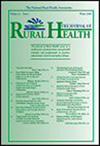Rural and urban differences in treatment on demand for substance use treatment involving medications for opioid use disorder
Abstract
Purpose
Research has found that the use of medications for opioid use disorder (MOUD) varies across the rural-urban divide; however, relationships between rurality, MOUD, and substance use treatment wait times remain underexplored. This study analyzes associations between rurality, MOUD usage, and immediate access to outpatient treatment—that is, “treatment on demand”—in the United States.
Methods
Using 2021-2022 Treatment Episode Data Set Admissions (TEDS-A) data on outpatient treatment centers, we employ logistic regression to analyze treatment on demand (0-day wait time) as the outcome and rurality as the key predictor in models disaggregated into patients who utilized MOUD at intake and those who did not. Analyses are also disaggregated by Census region and division of the country.
Findings
Results show that rurality reduces the odds of treatment on demand in both MOUD (OR = .513, P <.001) and non-MOUD (OR = .593, P <.001) models, with slightly stronger effects in the former. Associations with rurality vary substantially by region of the country. MOUD models in the Midwest, West, and South show rurality has a significant negative effect; these negative associations held for non-MOUD models only in the South. Further, differences across Census divisions highlight rurality's spatial disparities at a more granular level.
Conclusions
Understanding barriers to treatment on demand for evidence-based treatments is a crucial aspect of ensuring people who have opioid use disorder in rural regions receive the care they need. Policies should focus on increasing access to treatment to avoid delays while considering regional differences.

 求助内容:
求助内容: 应助结果提醒方式:
应助结果提醒方式:


